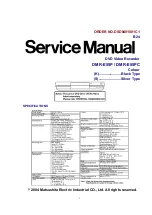
VI.
RECOMMENDED HIGH VOLTAGE DIELECTRIC WITHSTAND TESTING (Hi-Pot Testing)
Note:
This control has been Hi-Pot tested at 1500 Volts AC.
Testing agencies such as UL, CSA, VDE, etc., usually require that equipment under-
go a hi-pot test. In order to prevent catastrophic damage to the speed control, which
has been installed in the equipment, it is recommended that the following procedure
be followed. Figure 10, on page 17 shows a typical hi-pot test setup.
Note:
All equipment AC line inputs must be disconnected from the AC power.
A.
Connect all equipment AC power input lines together and connect them to the
H. V. lead of the hi-pot tester. Connect the RETURN lead of the hi-pot tester to
the frame on which the control and other auxiliary equipment are mounted.
B.
The hi-pot tester must have an automatic ramp-up to the test voltage and an
automatic ramp-down to zero voltage.
Note:
If the hi-pot tester does not have automatic ramping, then the hi-pot out-
put must be manually increased to the test voltage and then manually reduced
to zero. This procedure must be followed for each machine tested. A suggest-
ed hi-pot tester is Slaughter Model 2550.
WARNING! Instantaneously applying the hi-pot voltage will cause
irreversible damage to the speed control.
C.
The hi-pot test voltage should be set in accordance to the testing agency stan-
dards and the leakage current should be set as low as possible without causing
nuisance trips.
D.
To eliminate motor speed control damage due to auxiliary equipment hi-pot fail-
ure, it is also recommended that all signal inputs be wired together and con-
nected to the AC input lines as shown.
16
!









































